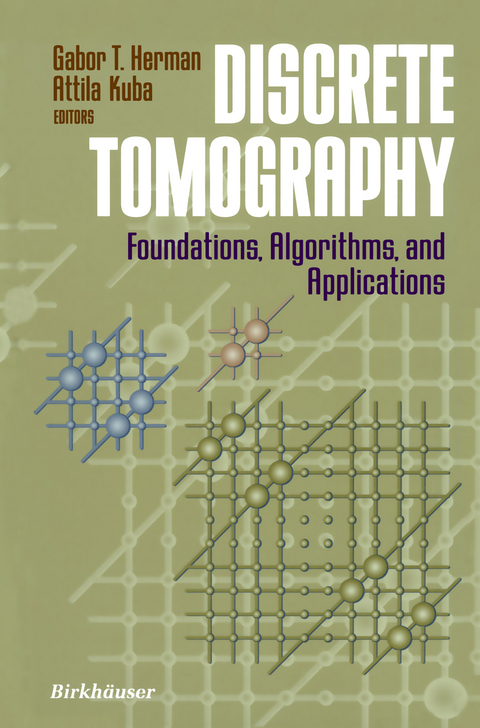
Discrete Tomography
Springer-Verlag New York Inc.
978-1-4612-7196-3 (ISBN)
Foundations.- Discrete Tomography: A Historical Overview.- Sets of Uniqueness and Additivity in Integer Lattices.- Tomographic Equivalence and Switching Operations.- Uniqueness and Complexity in Discrete Tomography.- Reconstruction of Plane Figures from Two Projections.- Reconstruction of Two-Valued Functions and Matrices.- Reconstruction of Connected Sets from Two Projections.- Algorithms.- Binary Tomography Using Gibbs Priors.- Probabilistic Modeling of Discrete Images.- Multiscale Bayesian Methods for Discrete Tomography.- An Algebraic Solution for Discrete Tomography.- Binary Steering of Nonbinary Iterative Algorithms.- Reconstruction of Binary Images via the EM Algorithm.- Compact Object Reconstruction.- Applications.- CT-Assisted Engineering and Manufacturing.- 3D Reconstruction from Sparse Radiographic Data.- Heart Chamber Reconstruction from Biplane Angiography.- Discrete Tomography in Electron Microscopy.- Tomography on the 3D-Torus and Crystals.- A Recursive Algorithm for Diffuse Planar Tomography.- From Orthogonal Projections to Symbolic Projections.
| Reihe/Serie | Applied and Numerical Harmonic Analysis |
|---|---|
| Zusatzinfo | XXII, 479 p. |
| Verlagsort | New York |
| Sprache | englisch |
| Maße | 155 x 235 mm |
| Themenwelt | Informatik ► Grafik / Design ► Digitale Bildverarbeitung |
| Informatik ► Theorie / Studium ► Künstliche Intelligenz / Robotik | |
| Mathematik / Informatik ► Mathematik ► Angewandte Mathematik | |
| Medizinische Fachgebiete ► Radiologie / Bildgebende Verfahren ► Radiologie | |
| Technik ► Elektrotechnik / Energietechnik | |
| ISBN-10 | 1-4612-7196-7 / 1461271967 |
| ISBN-13 | 978-1-4612-7196-3 / 9781461271963 |
| Zustand | Neuware |
| Informationen gemäß Produktsicherheitsverordnung (GPSR) | |
| Haben Sie eine Frage zum Produkt? |
aus dem Bereich


